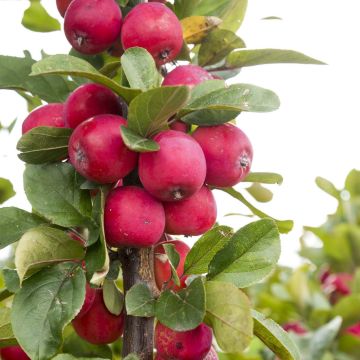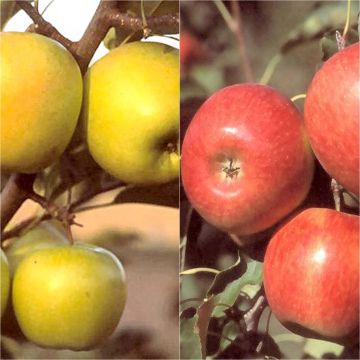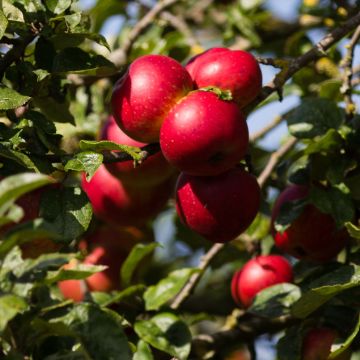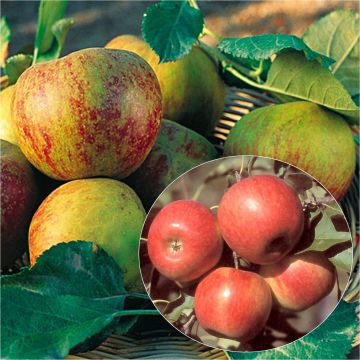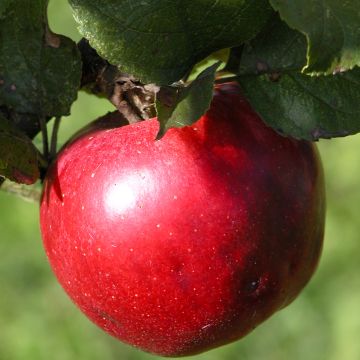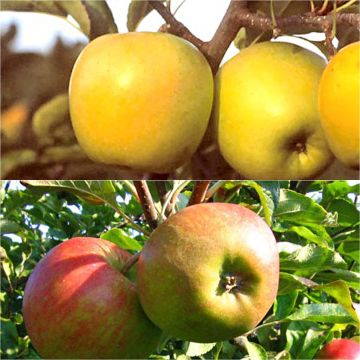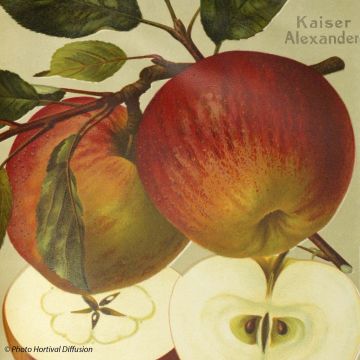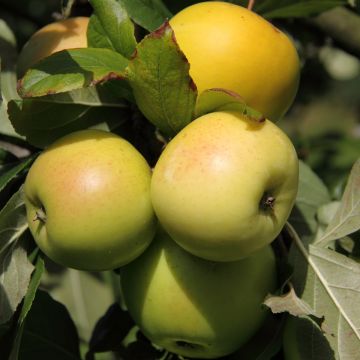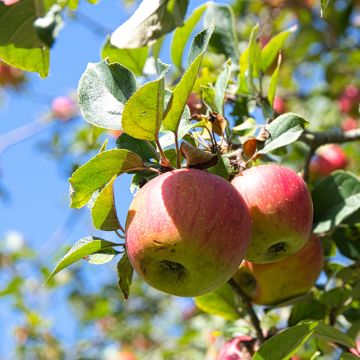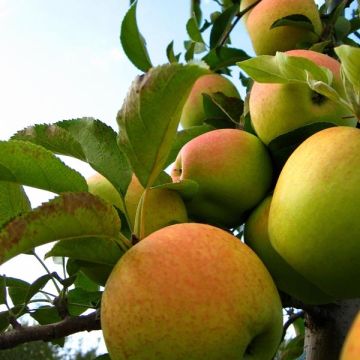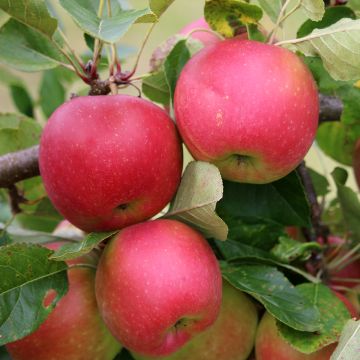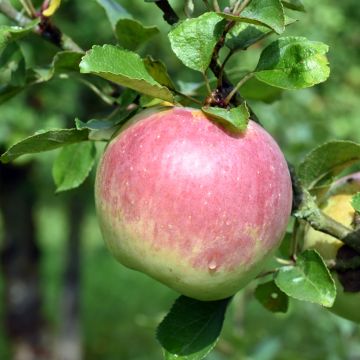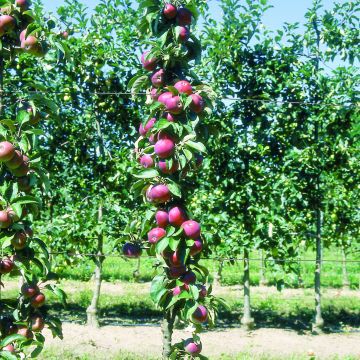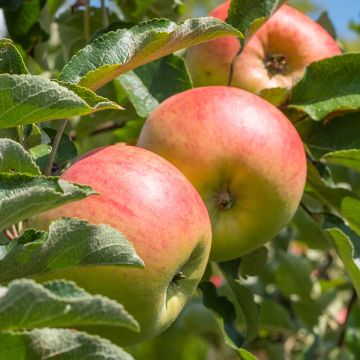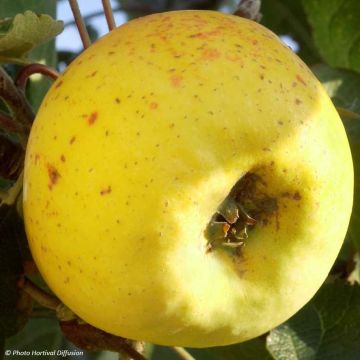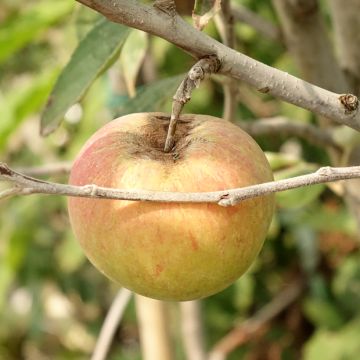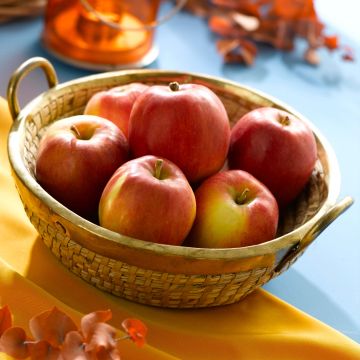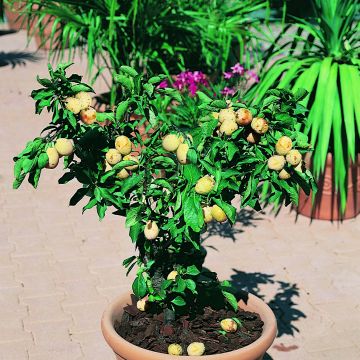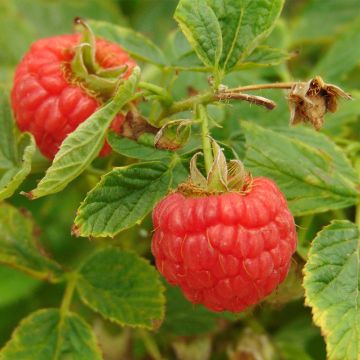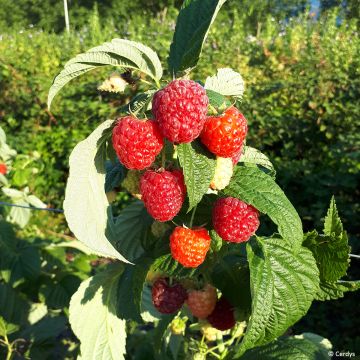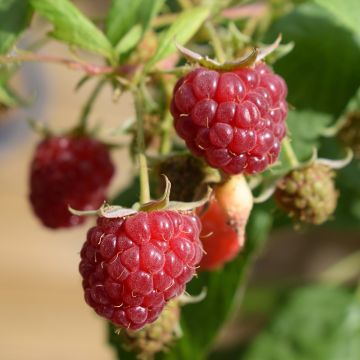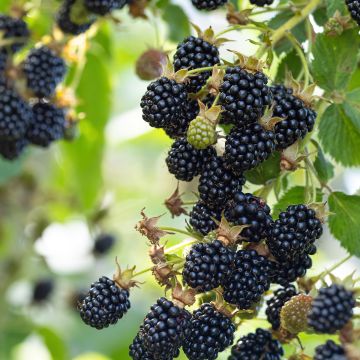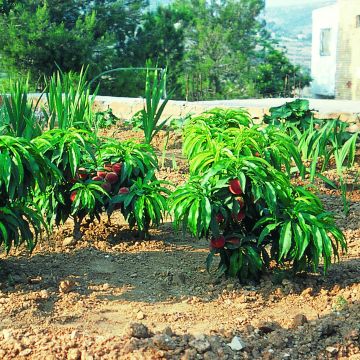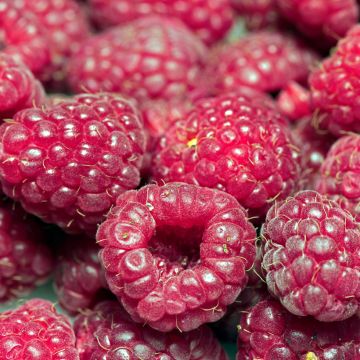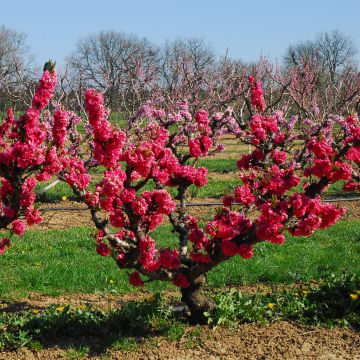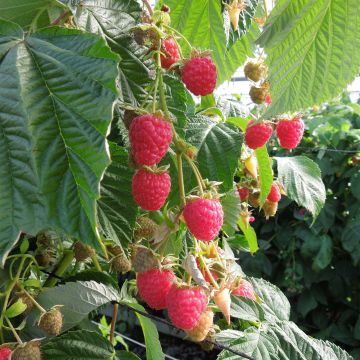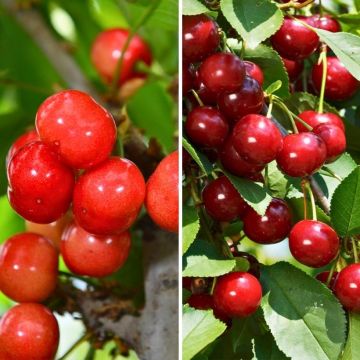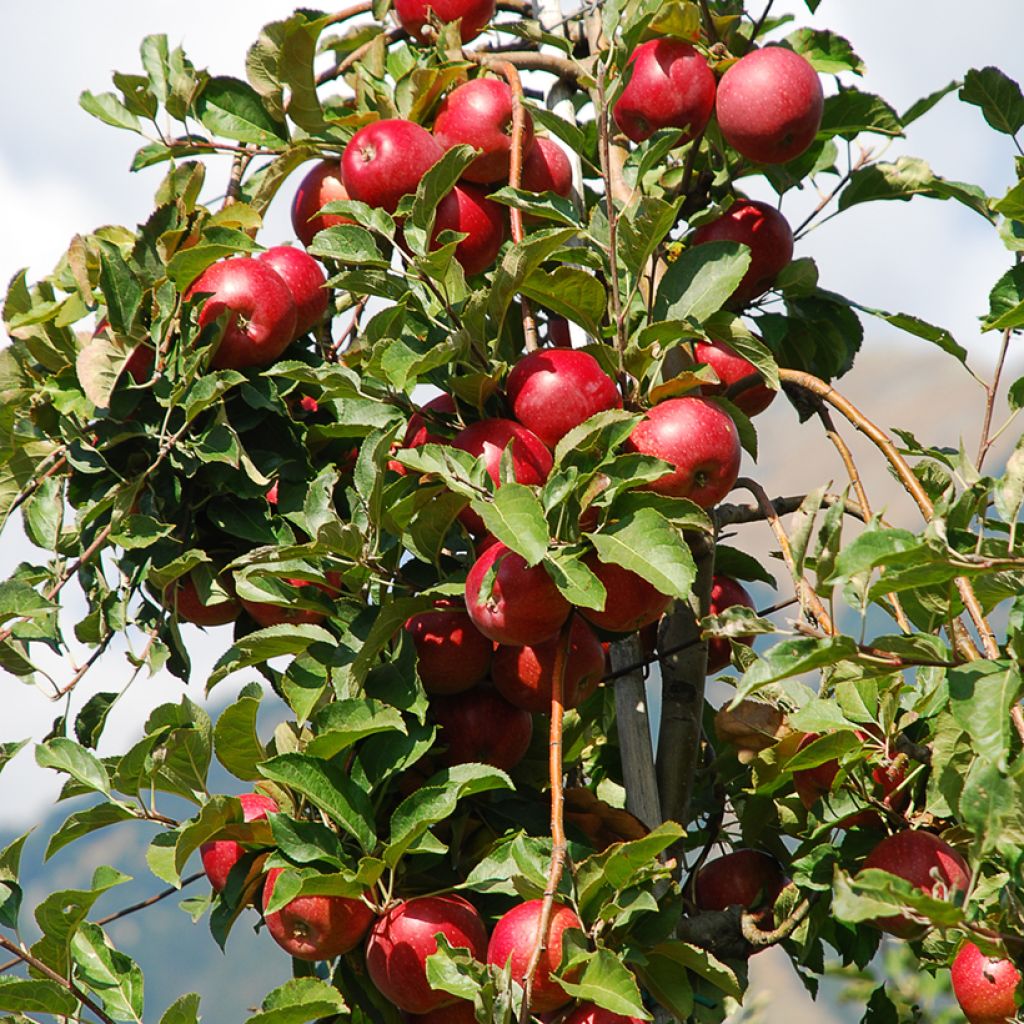

Dwarf Apple Tree Fruit Me Apple Me Red Gala
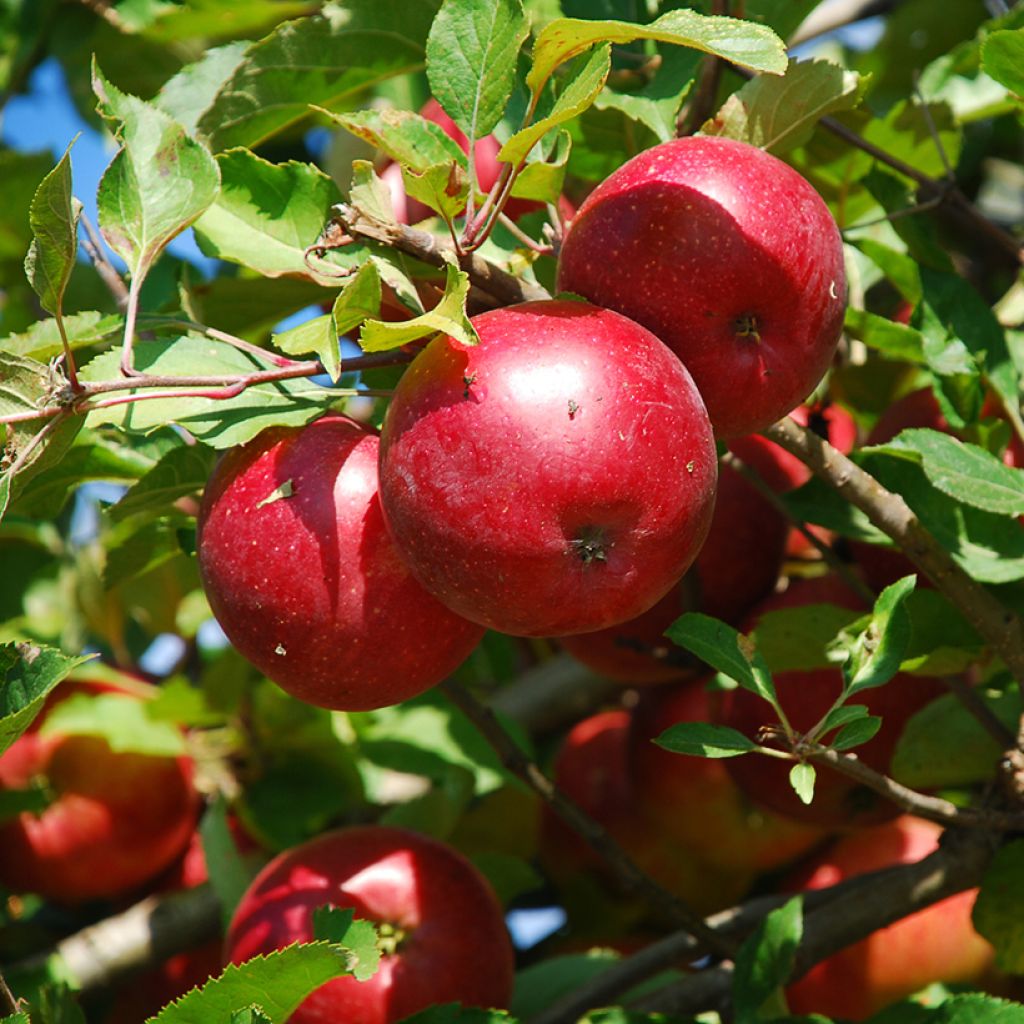

Dwarf Apple Tree Fruit Me Apple Me Red Gala
Dwarf Apple Tree Fruit Me Apple Me Red Gala
Malus domestica Fruit Me Apple Me Red Gala
Apple, Orchard apple, Table apple, Cultivated apple
Très déçu de la taille de l'arbuste pour le prix que j'ai payé, surtout que ça ne correspond en rien au visuel présenté sur le site!
Sébastien , 14/12/2023
Why not try an alternative variety in stock?
View all →This plant carries a 6 months recovery warranty
More information
We guarantee the quality of our plants for a full growing cycle, and will replace at our expense any plant that fails to recover under normal climatic and planting conditions.
From €5.90 for pickup delivery and €6.90 for home delivery
Express home delivery from €8.90.
Description
The Dwarf Apple Tree Fruit Me Apple Me Red Gala is characterised by its size not exceeding 1.50 m (5ft), making it suitable for gardens with limited space, cultivation in pots on balconies or terraces, or for creating a small fruit hedge. With quick fruiting, it allows for harvesting beautiful, round, regular apples of medium size, measuring 7 to 8 cm (3 inches) in diameter. Its skin is thin, shiny, with a dark red colouration on a yellow background, enclosing a yellow, juicy, crunchy flesh, very sweet, with a slight hint of acidity, and aromas of banana and pear. In September-October, it is a refreshing apple that can be enjoyed at any time, or used in countless sweet or savoury recipes. The fruits are resistant to shocks. It is a hardy variety, partially self-fertile, and fairly productive, but having other apple varieties nearby will improve pollination.
Malus domestica, scientifically also called Malus communis or Malus pumila, is commonly known as the Common or Domestic Apple Tree. It belongs to the Rosaceae family. It is a fruit tree native to the forests of Central Asia. It has excellent hardiness and is probably the most cultivated fruit tree in Northern Europe. There are about 20,000 varieties, including around 10,000 of American origin, 2,000 of English origin, and 2,000 of Chinese origin. The Gala Apple is a variety created in New Zealand by J.H. Kidds in 1920. It is the result of several cross-breeding: Cox Orange x Red Delicious, which resulted in Kidd's Orange Red, crossed with Golden Delicious to obtain Gala.
The variety Fruit Me Apple Me Red Gala is part of a very innovative series of semi-dwarf fruit trees recently developed in Spain. The grafting technique used on a very specific, latest-generation rootstock allows this fruit tree to adapt to the available soil volume while ensuring high-quality fruiting from the first years of cultivation. This mini-apple tree has the ability to adapt its growth according to the cultivation location. In open ground, it develops a semi-erect, rounded habit with well-branched, airy growth, reaching a height of about 2.50 metres (8 feet) and a spread of 2 meters (7 feet) at maturity. In a pot, it will not exceed 1.50 metres (5 feet) in height and 80 to 90 cm (32 to 35in) in width.
Its foliage consists of lanceolate leaves, measuring 8 to 15 cm (3 to 6in) in length and 3 to 4 cm (1 to 2in) in width, with serrated and wavy edges, a fresh green color, which turn yellow-orange in autumn before falling. The leaves have a slight almond scent. In mid-April, the pink flowers, measuring 2 to 3 cm (1in) in diameter, appear solitarily before the leaves on the previous year's branches. They can be damaged by frost from -2 to -3°C (28.4 to 26.6°F). It is a remarkably decorative flowering in spring, and particularly attractive to bees and butterflies. It is a hardy plant, tolerating temperatures down to -15°C (5°F), but it is sensitive to late spring frosts that can damage its flowers and affect fruiting. It is suitable for regions of France with a fairly temperate climate and at medium altitude in mountainous regions. It is partially self-fertile, but having other apple varieties nearby will improve pollination and therefore production. Varieties such as Elstar, Fruit Me Apple Me Elstar, Fruit Me Apple Me Yellow Golden, Gala, Golden Delicious, Granny Smith, Reine des Reinettes, Rouge Delicious, or any other mid-late flowering variety are suitable for cross-pollination. Ornamental apple trees such as Malus Perpetu Evereste and Malus John Downie flower abundantly and can be excellent pollinators.
The Dwarf Apple Tree Fruit Me® Apple Me Red Gala is a vigorous variety with very rapid and highly productive fruiting. The harvest is homogeneous and abundant, although it may show a tendency towards alternate bearing, meaning that a year of high productivity may be followed by a year of low yield. The apples can be harvested throughout the month of September. It is a very good 'knife apple', suitable for eating raw or cooked, in compotes, pastries, paired with cheese, or as an accompaniment to savoury dishes such as black pudding, pork, or salads. It is also perfect for making juice. Easy to consume, apples provide a feeling of satiety. Rich in carbohydrates and fructose, they are invigorating and rehydrating. Their content of vitamins A, B, C, and E, minerals, antioxidants, and fibre make apples a health asset. The fruits can be stored throughout autumn and part of winter. Storage can be done in a cool, dry place, protected from light, at a temperature around 8 to 10°C (46.4 to 50°F), or in a cold room, sealed from outside air, at a temperature of 1 to 3°C (33.8 to 37.4°F). Apples release ethylene, a gas that promotes fruit ripening. To accelerate the ripening of other fruits or vegetables, place your apples next to them.
Very popular thanks to its fruits, the apple tree finds its place in the garden for the pleasure of young and old. Among a wide range of apple trees, it is easy to find the variety that best suits one's desires or needs. This Mini Apple Tree, Apple Me Red Gala, like all the fruit trees in the Fruit Me range, is also easy to cultivate, hardy, reliable, and resistant to diseases, while allowing for the creation of a miniature orchard on the terrace or balcony.
Report an error about the product description
Dwarf Apple Tree Fruit Me Apple Me Red Gala in pictures
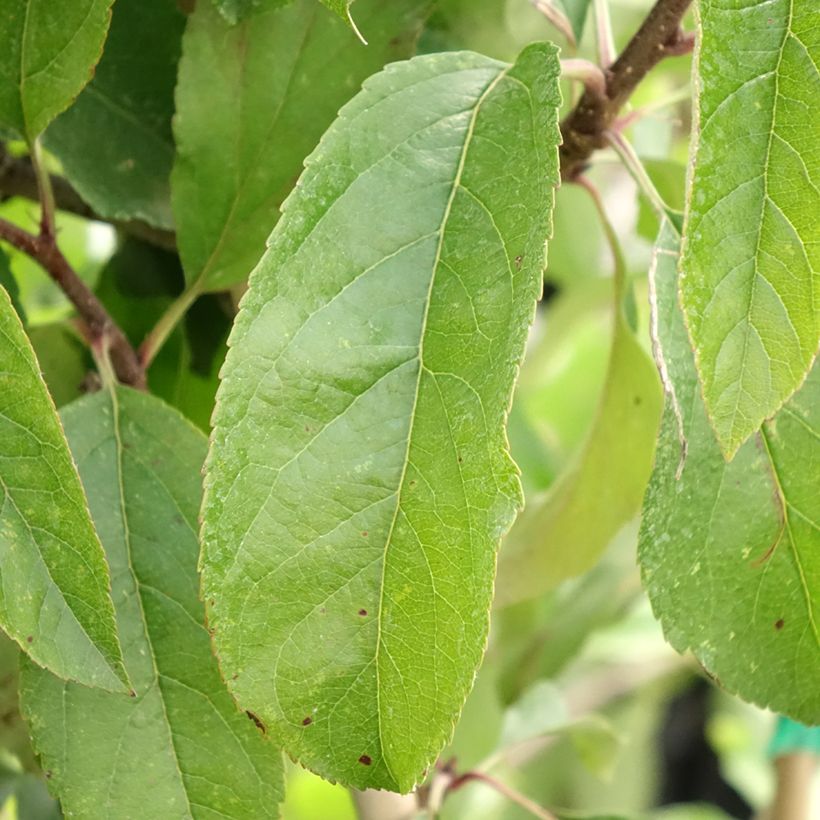

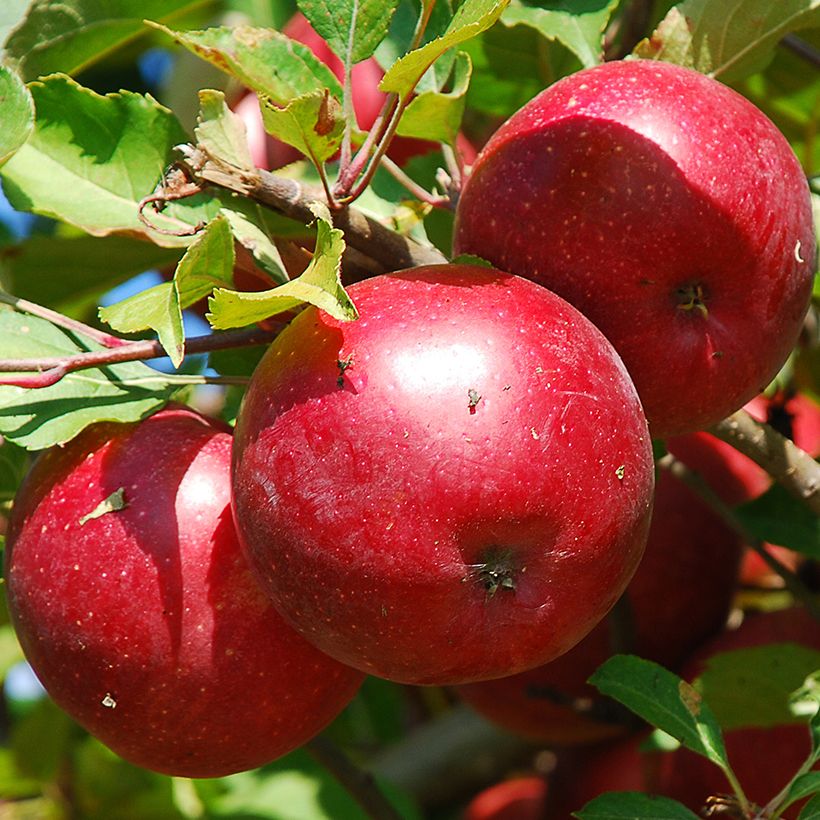

Plant habit
Fruit
Flowering
Foliage
Botanical data
Malus
domestica
Fruit Me Apple Me Red Gala
Rosaceae
Apple, Orchard apple, Table apple, Cultivated apple
Cultivar or hybrid
Other Apple trees
Planting and care
Choose a well-sunlit location for your Dwarf Apple Tree Fruit Me Apple Me Red Gala. The soil can be slightly chalky or acidic, but without excess. Dig a large planting hole at least 3 times the volume of the root ball. Simultaneously add organic matter (topsoil, compost...) and a base fertiliser such as bonemeal. Do not bury the graft union. Stake if necessary. Water abundantly, even in winter, even if it rains. Fruit trees are ideally planted between October and March, outside of the freezing period. Container-grown plants can be planted all year round, except during periods of high heat or frost.
The advantage of dwarf fruit trees is that they can be planted in containers or pots for outdoor use. Choose a container of at least 60L. Make sure the container is perforated and provide good drainage by filling the bottom with a thick layer of clay balls or gravel. In pots, your trees will naturally require more regular watering. In winter, move your fruit trees to a sheltered location away from the wind and stop watering during the frost period. Surface dress at least every two years, which involves replacing at least the topsoil with fresh soil and fertilise before flowering, choose a special fertiliser that is not too rich in nitrogen.
In winter, at the base of the tree and lightly incorporated into the soil surface, you can add a small handful of wood ash, rich in potash, which will improve fruiting. Apple trees can be susceptible to various diseases and pests. To limit risks, space the trees adequately, install multi-species hedges, birdhouses or insect hotels to attract beneficial insects. In summary, prioritize diversity. The main diseases of apple trees are scab (brown spots on leaves), brown rot (wilting of flowers and rotting of fruits on the tree), and powdery mildew (white powdery coating on leaves). For pests, the codling moth (or fruit worm) is a small caterpillar that tunnels inside the fruit, originating from the eggs laid by a moth. To remedy this, it is best to act preventively by encouraging the presence of tits and bats through the installation of nest boxes. In case of aphid infestation, spray a solution based on black soap.
During the harvest in September, only keep the picked fruits. For good storage, it is advisable to place the apple with its stem pointing downwards, on racks or in crates. Choose a preferably completely dark, dry, cool place, but frost-free.
Planting period
Intended location
Care
-
, onOrder confirmed
Reply from on Promesse de fleurs
Fruit trees for small gardens
Haven't found what you were looking for?
Hardiness is the lowest winter temperature a plant can endure without suffering serious damage or even dying. However, hardiness is affected by location (a sheltered area, such as a patio), protection (winter cover) and soil type (hardiness is improved by well-drained soil).

Photo Sharing Terms & Conditions
In order to encourage gardeners to interact and share their experiences, Promesse de fleurs offers various media enabling content to be uploaded onto its Site - in particular via the ‘Photo sharing’ module.
The User agrees to refrain from:
- Posting any content that is illegal, prejudicial, insulting, racist, inciteful to hatred, revisionist, contrary to public decency, that infringes on privacy or on the privacy rights of third parties, in particular the publicity rights of persons and goods, intellectual property rights, or the right to privacy.
- Submitting content on behalf of a third party;
- Impersonate the identity of a third party and/or publish any personal information about a third party;
In general, the User undertakes to refrain from any unethical behaviour.
All Content (in particular text, comments, files, images, photos, videos, creative works, etc.), which may be subject to property or intellectual property rights, image or other private rights, shall remain the property of the User, subject to the limited rights granted by the terms of the licence granted by Promesse de fleurs as stated below. Users are at liberty to publish or not to publish such Content on the Site, notably via the ‘Photo Sharing’ facility, and accept that this Content shall be made public and freely accessible, notably on the Internet.
Users further acknowledge, undertake to have ,and guarantee that they hold all necessary rights and permissions to publish such material on the Site, in particular with regard to the legislation in force pertaining to any privacy, property, intellectual property, image, or contractual rights, or rights of any other nature. By publishing such Content on the Site, Users acknowledge accepting full liability as publishers of the Content within the meaning of the law, and grant Promesse de fleurs, free of charge, an inclusive, worldwide licence for the said Content for the entire duration of its publication, including all reproduction, representation, up/downloading, displaying, performing, transmission, and storage rights.
Users also grant permission for their name to be linked to the Content and accept that this link may not always be made available.
By engaging in posting material, Users consent to their Content becoming automatically accessible on the Internet, in particular on other sites and/or blogs and/or web pages of the Promesse de fleurs site, including in particular social pages and the Promesse de fleurs catalogue.
Users may secure the removal of entrusted content free of charge by issuing a simple request via our contact form.
The flowering period indicated on our website applies to countries and regions located in USDA zone 8 (France, the United Kingdom, Ireland, the Netherlands, etc.)
It will vary according to where you live:
- In zones 9 to 10 (Italy, Spain, Greece, etc.), flowering will occur about 2 to 4 weeks earlier.
- In zones 6 to 7 (Germany, Poland, Slovenia, and lower mountainous regions), flowering will be delayed by 2 to 3 weeks.
- In zone 5 (Central Europe, Scandinavia), blooming will be delayed by 3 to 5 weeks.
In temperate climates, pruning of spring-flowering shrubs (forsythia, spireas, etc.) should be done just after flowering.
Pruning of summer-flowering shrubs (Indian Lilac, Perovskia, etc.) can be done in winter or spring.
In cold regions as well as with frost-sensitive plants, avoid pruning too early when severe frosts may still occur.
The planting period indicated on our website applies to countries and regions located in USDA zone 8 (France, United Kingdom, Ireland, Netherlands).
It will vary according to where you live:
- In Mediterranean zones (Marseille, Madrid, Milan, etc.), autumn and winter are the best planting periods.
- In continental zones (Strasbourg, Munich, Vienna, etc.), delay planting by 2 to 3 weeks in spring and bring it forward by 2 to 4 weeks in autumn.
- In mountainous regions (the Alps, Pyrenees, Carpathians, etc.), it is best to plant in late spring (May-June) or late summer (August-September).
The harvesting period indicated on our website applies to countries and regions in USDA zone 8 (France, England, Ireland, the Netherlands).
In colder areas (Scandinavia, Poland, Austria...) fruit and vegetable harvests are likely to be delayed by 3-4 weeks.
In warmer areas (Italy, Spain, Greece, etc.), harvesting will probably take place earlier, depending on weather conditions.
The sowing periods indicated on our website apply to countries and regions within USDA Zone 8 (France, UK, Ireland, Netherlands).
In colder areas (Scandinavia, Poland, Austria...), delay any outdoor sowing by 3-4 weeks, or sow under glass.
In warmer climes (Italy, Spain, Greece, etc.), bring outdoor sowing forward by a few weeks.

































